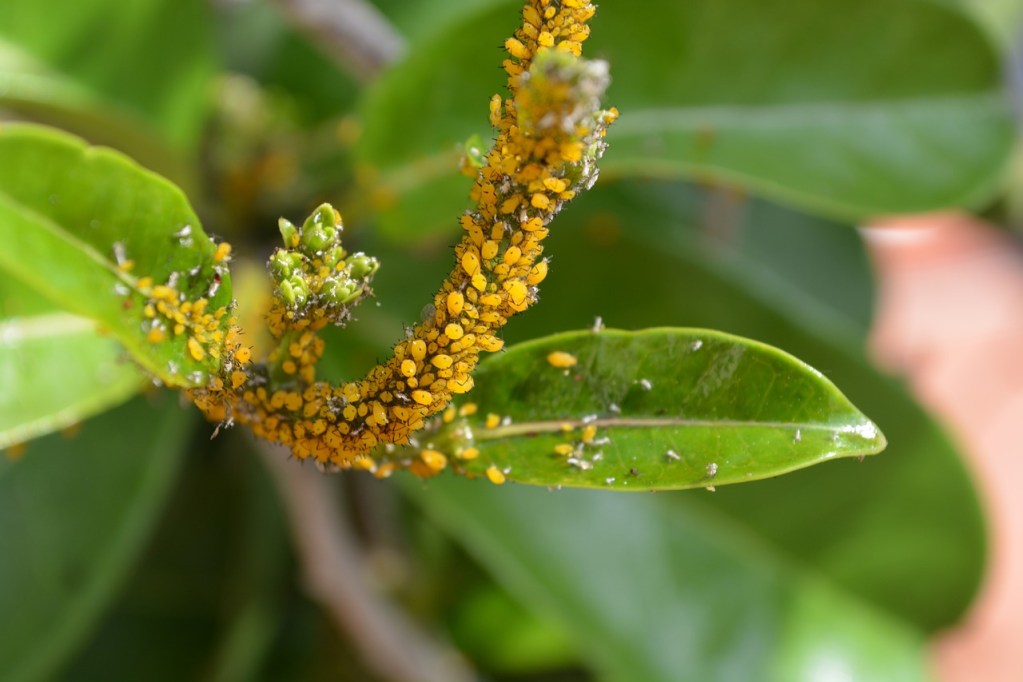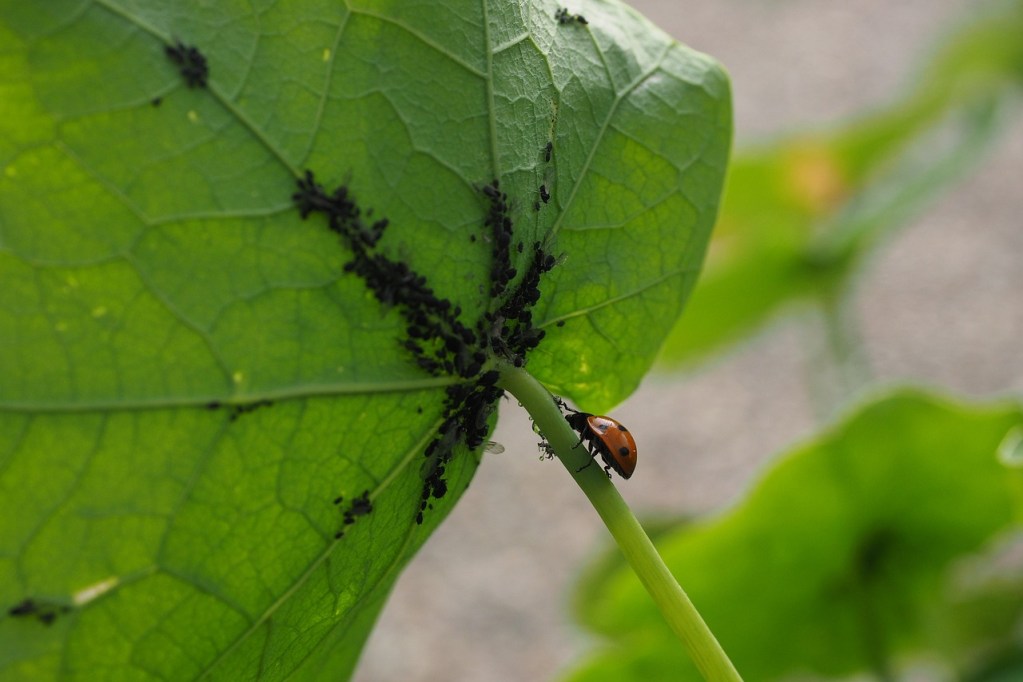There are many common garden pests that can damage your plants. While some are relatively harmless, others can do quite a bit of damage. Of course, some of the largest danger to your plants comes from pests that travel in groups. Scale insects are one such pest, frequently seen in clusters along plant stems. If you want to know how to recognize this pest and learn how to get rid of scale on plants, this is the guide for you. We’ll explain how to identify scale insects and go over several methods to eliminate them.
Identifying scale on plants

Scale insects are related to aphids and mites, but they’re easy to tell apart from other pests, because they don’t move much. You’re unlikely to see the scale insects as they arrive at the plant. Instead, look for a series of bumps or lumps on your plants’ stems or the undersides of their leaves. These bumps can be black, green, brown, yellow, or white, often appearing in rows or clusters. Scale insects can range in size, depending on the species, with some scale insects staying quite small. Scale insects are soft when young, and some species stay soft for their entire lives. However, many species develop a waxy cover that hardens as they age.
A single scale insect doesn’t do much damage, but scale insects are rarely seen alone due to how many eggs they can produce. They are sap-sucking pests, meaning they bite the stems and leaves and drink the sap from inside, like little vampires. A large infestation can drain a stem or leaf of sap almost entirely, and the wounds they leave are vulnerable to certain fungal infections.
Insecticidal soap

Insecticidal soap is a simple pest control solution you can make at home. While it is less effective against hard-scale insects, because of the waxy protective covering they develop as they age, it is easy and effective against younger and soft-scale insects. This makes insecticidal soap a great first step or preventative measure when dealing with scale on plants. Insecticidal soap can also treat other pests like aphids and mites, so it’s also a good option if you aren’t certain if the pest you’re dealing with is actually scale.
To make your insecticidal soap, mix water with a few drops of dish soap. If you prefer, you can add a small amount of rubbing alcohol, chili oil, or garlic to the spray. These ingredients make the spray more effective against certain pests, but they can also irritate or dry out your plant, so be sparing with them. Avoid adding bleach or other harsh chemicals.
Neem oil

Neem oil is another option for early infestations and preventative measures. If you already have scale on plants, then neem oil is best used in the early stages, before they’ve had a chance to build up their protective shells. However, where neem oil really shines is as a preventative measure. You can spray it on plants to keep scale insects and other pests from landing and laying eggs on them. This also makes neem oil a good secondary treatment. After you’ve gotten rid of the scale insects, you can spray neem oil onto your plant to keep the scale from coming back and to get rid of any eggs that may be left behind.
Rubbing alcohol

Rubbing alcohol can be used to treat scale in a similar way to the above methods. It’s more effective against young or soft-scale insects, but while it isn’t the most effective way to remove mature-scale insects, it’s more effective than insecticidal soap or neem oil at dealing with older-scale insects.
You can mix rubbing alcohol and water to spray onto the infestation. A more effective method is to dip or soak a cotton ball, cotton swab, or part of a paper towel in the rubbing alcohol and then dab or rub the scale insects with it. Be sure to take any necessary precautions when handling rubbing alcohol, as it can irritate some people’s skin and may sting any open cuts you have on your hands.
Removing by hand

Once hard-scale insects have matured and developed their waxy coating, the most effective way to remove them is by hand. This method also works on soft-scale insects and young ones. You can use anything firm enough to push the scale insects, but not hard enough to risk damaging your plant. You can use your hand, a toothbrush (one you don’t plan on using again, of course), a cotton swab, or a note card, and simply scrape the scale off the plant. Once they’re off, you can get rid of them in the trash, down the toilet, or drown them in a bowl of water before dumping them outside.
Scale on plants can be frustrating, especially if you’re dealing with hard-scale insects that are protected from the most common pest control methods. Now that you know how to identify, prevent, and get rid of scale on plants, you’re better prepared to protect your plants. These methods are safe and effective, and you can even combine them for better results!




